Jerash, Jordan — Practical Guide to Roman Ruins, Tickets and Tips
Jerash, Jordan — A Practical Guide to the Roman City of Gerasa
Jerash is one of the best-preserved Roman cities anywhere, a place where you can walk a colonnaded boulevard, step into two ancient theaters, and stand beneath monumental arches—all in a single compact site an hour north of Amman. This guide gives you everything you need: what to see, current tickets and opening hours, how to get there, when to go, and how to make the most of a half-day or full-day visit. What & Why: A quick history of Jerash (Gerasa)
Known in antiquity as Gerasa, Jerash flourished under the Greeks and Romans and was a member of the Decapolis, the Hellenistic league of cities across today’s Jordan, Israel/Palestine, and Syria. An earthquake in 749 CE devastated much of the city, helping “freeze” it in time. Today, Jerash’s forum (Oval Plaza), Cardo Maximus, theaters, and temples offer an unusually complete city plan—one reason it appears on Jordan’s UNESCO Tentative List.
At a glance
• Location: 50–55 km north of Amman
• Travel time from Amman: ~1–1.25 hours by car; scheduled bus options available on select days
• Ticket price (non-Jordanians): 10 JOD (site + museum); included with the Jordan Pass
• Opening hours: Seasonally 8:00–16:00 (winter) up to ~8:00–18:30 (summer); shorter in Ramadan
• Best season: Spring (Mar–May) and autumn (Sep–Oct) for milder temperatures
• Top sights: Hadrian’s Arch, Oval Plaza, Cardo Maximus, South & North Theaters, Temple of Artemis, Nymphaeum, city walls
• Quick tips: Arrive early for softer light and fewer crowds; wear sturdy shoes; carry water and sun protection
(Fees/hours verified and last checked: Oct 18, 2025)
Top things to see in Jerash
Hadrian’s Arch
Built to honor Emperor Hadrian’s visit (129/130 CE), this triumphal arch marks the “ceremonial” entrance to Roman Jerash. It’s the classic photo spot before you continue to the hippodrome and South Gate. Pro tip: shoot back toward the arch mid-morning for even light on the façade.
Hippodrome & South Gate
Just inside the South Gate are the remains of the hippodrome where chariot races once took place. Look for the curve of the arena and the starting gates.
Oval Plaza (Forum)
Jerash’s signature space: an elegant, almost circular piazza ringed by Ionic columns, opening onto the Cardo. Stand near the center to appreciate its geometry, then climb slightly for the wide-angle view.
Cardo Maximus
The city’s north-south “main street,” paved with limestone blocks bearing visible wheel ruts. Notice the drainage holes lining the curbs—one of the subtle engineering details. Pro tip: late afternoon light rakes through the colonnade for contrasty street shots.
South Theater & North Theater
The South Theater is the larger and more photogenic, with fine acoustics—stand on the center “sweet spot” and speak to hear your voice carry. The smaller North Theater offers quieter views and tiers you can climb for city panoramas.
Temple of Artemis & Cathedral complex
A short uphill walk rewards you with towering columns of the Temple of Artemis, patron goddess of Gerasa. Near here, explore the Byzantine Cathedral remains to see how the city evolved in the early Christian era. Pro tip: from the Artemis terrace, you get a fantastic look back over the Cardo and forum. Nymphaeum & city walls
The ornate public fountain (nymphaeum) still impresses; continue to surviving stretches of the walls and gates to understand Jerash’s footprint.
Tickets, hours & visitor essentials (last checked: Oct 18, 2025)
- Tickets: 10 JOD for non-Jordanians (site + archaeological museum). This price is reflected in sector fee lists used by tour operators. Included with the Jordan Pass. Children and Jordanians have different rates set by the authorities.
- Opening hours: Officially 8:00–16:00 (winter); 8:00–18:30 (summer); 8:00–17:30 (Apr–May); ~9:00–17:00 in Ramadan. Friday/holiday hours vary—confirm just before your visit.
- Facilities: On-site restrooms near major entrances; small cafés/vendors by the gate; bring water and sun protection.
- Dress & comfort: There’s no strict legal dress code, but modest, breathable clothing and sturdy shoes are smart given sun exposure and uneven paving. (See Safety/Etiquette for more.)
- Accessibility: Surfaces are uneven and stepped; wheelchair access is limited beyond the first segments. Consider a lightweight mobility aid or adjust expectations.
- Guides: Licensed guides often wait near the main entrance; agree route/price beforehand.
Getting there from Amman & elsewhere
Self-drive: From central Amman, it’s typically 1–1.25 hours via Highway 35/15 depending on traffic; free parking is available near the site.
Bus (scheduled): JETT operates Amman–Jerash–Ajloun on specific days (e.g., Saturday–Thursday 08:15 per current schedule). Check the live timetable and book in advance. jett.com.jo
Local buses/minibuses: Buses depart Amman North (Tabarbour) Station toward Jerash when full; fares are low but departures aren’t clock-timed (traveler-reported ~1 JOD one way—always reconfirm on the day).
Tours: Numerous day trips combine Jerash with Ajloun or Amman city highlights.
From the north (Irbid/Umm Qais): Expect ~1.5–2 hours by car depending on route and stops.
Best time to visit & weather
Spring (Mar–May) and autumn (Sep–Oct) bring mild temperatures, green hills, and comfortable walking. In summer, plan early morning or late afternoon for softer light and lower heat; in winter, shorter days and potential showers mean you’ll rely more on the core 8:00–16:00 window. Festival season (late July–early August) increases evening activity and regional visitors—book lodging/transport ahead. Wikipedia
Safety, etiquette & photography (tripods/drones)
Jordan remains a welcoming destination, but always check current advisories for regional developments and follow local guidance. Avoid political gatherings and monitor news on travel days. GOV.UK+1
Etiquette & dress: Jordan is generally conservative away from beach resorts. Lightweight, modest clothing (covering shoulders/knees) is both respectful and practical in the sun. (Multiple reputable operators and cultural guides share this advice.)
Drones: Don’t launch a drone without authorization. Jordan’s Civil Aviation Regulatory Commission (CARC) regulates drones and has begun licensing operators; casual tourist flights at archaeological sites are not permitted without approvals and site permissions. Penalties may apply.
Sample itineraries
Half-day (3–4 hours)
- Enter via Hadrian’s Arch → Hippodrome → South Gate
- Oval Plaza → stroll the Cardo Maximus
- Climb the South Theater; continue to Nymphaeum
- Ascend to Temple of Artemis and Cathedral remains
- Backtrack along side streets/decumani to exit
Full day (6–7 hours)
- Follow half-day route, then add: North Theater, northern Cardo, city walls/gates
- Visit the Archaeological Museum (small but contextual)
- Long lunch/coffee break near the gate; return for detail shots in late light
Jerash Festival of Culture & Arts
The Jerash Festival transforms the Roman theaters into open-air stages for Arab and international performers. Dates historically fall late July to early August, with exact schedules announced via official channels and ticketing partners. If your trip overlaps, expect fuller evenings and occasional site closures around performance prep—check the year’s program before you go. Wikipedia+1
Nearby — building a North Jordan loop
- Ajloun Castle (30–40 min): An Ayyubid hilltop fortress with forest views—great to pair with Jerash. JETT runs combined routes on set days.
- Ajloun Forest Reserve: Trails and cool woodlands (RSCN property).
- Umm Qais (Gadara): Roman ruins with Sea of Galilee views; longer drive but rewarding.
- Amman Citadel & Roman Theater: Add context to the Roman/Byzantine layers of Jordan’s capital. (Hours also listed on Jordan Pass.)
Budgeting & money-savers
- Entrance: 10 JOD (non-Jordanian); Jordan Pass holders enter free (inclusion confirmed).
- Transport: Self-drive fuel + parking (usually free near the gate); JETT bus fares vary by route/date; local buses are cheapest but less predictable. jett.com.jo
- Guides: Rates vary—agree in advance.
- Timing: Arrive at opening for coolest temps and best light; bring snacks/water to avoid impulse purchases inside.
Responsible travel
Stay on marked paths and avoid climbing fragile structures; ancient stones can be slick and unstable. Support local businesses in Jerash town—family restaurants, craft stalls, and cafés—spreading the benefit beyond the site.
FAQs
Is Jerash worth visiting if I’ve seen Rome?
Yes—Jerash offers a uniquely cohesive Roman city plan in one place: forum, colonnaded streets, theaters, temples, and gates.
How long do you need for Jerash?
Plan 3–4 hours for highlights; a full day lets you explore quieter northern sectors and the museum.
Is Jerash included in the Jordan Pass?
Yes. The Jordan Pass lists Jerash among included attractions.
What time does Jerash open?
Seasonal: typically 8:00–16:00 (winter) up to ~18:30 (summer); shorter hours during Ramadan; Fridays/holidays differ. Always recheck official hours right before visiting.
Can I visit on a day trip from Amman without a tour?
Yes—self-drive (~1–1.25 hrs), JETT scheduled services on select days, or local buses from the North Station.
How much is the jerash entrance ticket?
10 JOD for non-Jordanians (site + museum) per fee lists used by operators; included with Jordan Pass.
Is Jerash open during Ramadan?
Yes, but shortened hours (check official page).
What should I wear when visiting jerash jordan?
Modest, breathable clothing (shoulders/knees covered) and sun protection; sturdy shoes for uneven paving.

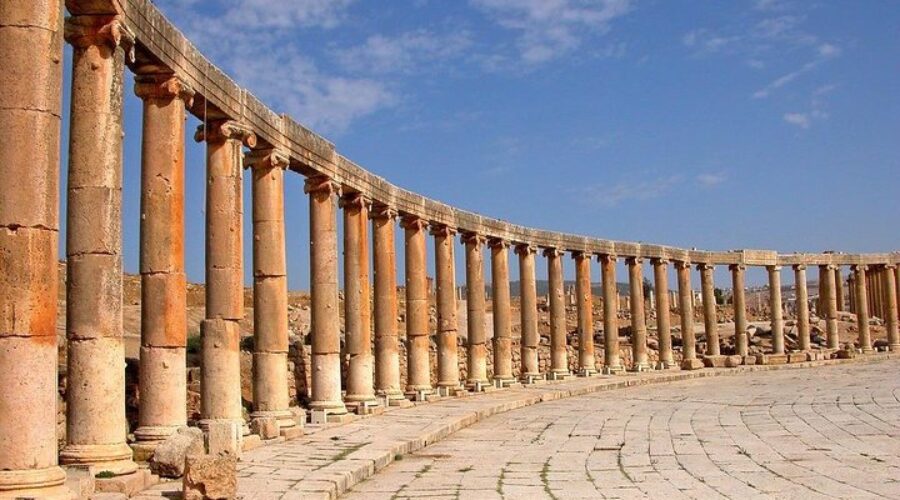
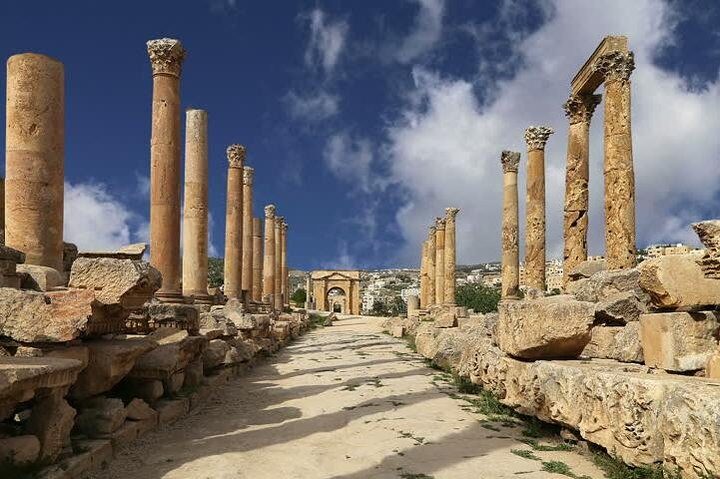
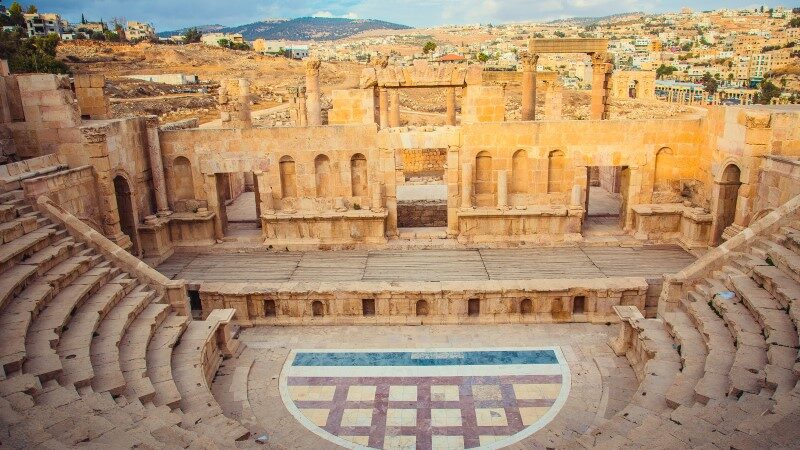
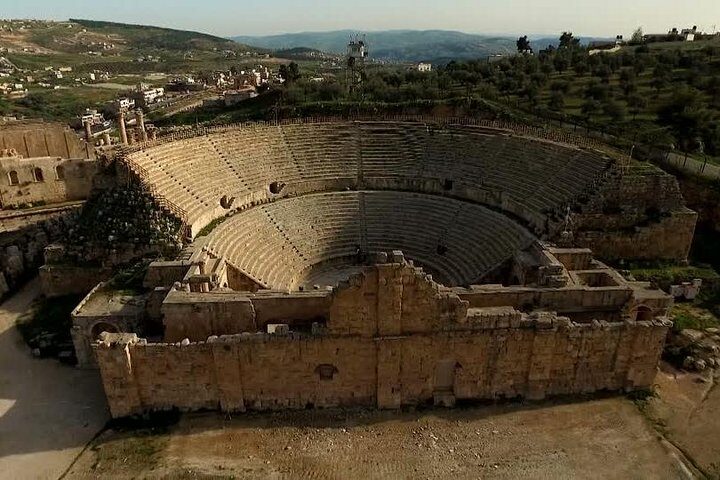
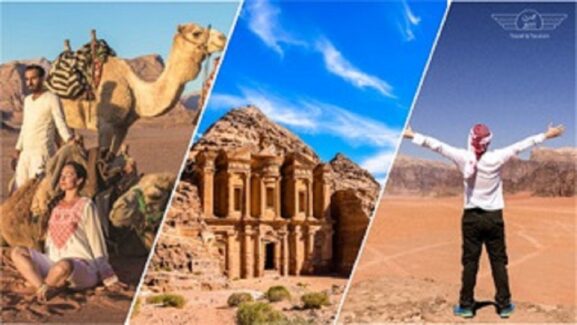

wowjordan
22/10/2025 at 11:27 amJerash tourism guide will help to explore more information about Jerash before visiting and give you many tips will help you for more enjoyable trip to Jerash Jordan